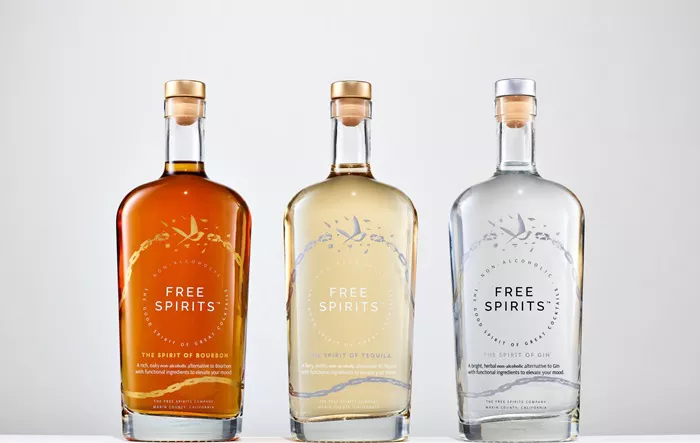In the realm of spirits, the distinction between bourbon and whiskey often confounds even the seasoned connoisseur. While both fall under the category of whiskey, they possess unique attributes that set them apart. Understanding these differences is crucial for aficionados and newcomers alike, as it enhances appreciation and enjoyment of these beloved libations. In this article, we delve into the intricate nuances that define bourbon and whiskey, unraveling their distinctive characteristics.
Origins and Legal Definitions:
At the heart of understanding the disparity between bourbon and whiskey lies in their origins and legal definitions. Contrary to popular belief, bourbon is a type of whiskey, but not all whiskey is bourbon. The key distinction lies in geography and production regulations. Bourbon is a uniquely American spirit, legally recognized as such by the United States Congress in 1964. To be classified as bourbon, the spirit must be produced in the United States, with the majority of its grain content being corn. On the other hand, whiskey is a broader category that encompasses various styles produced worldwide, including bourbon.
Ingredients and Mash Bill:
Delving deeper into the production process, the composition of ingredients, known as the mash bill, plays a pivotal role in distinguishing bourbon from other types of whiskey. While both bourbon and whiskey typically contain a mixture of grains, such as barley, rye, and corn, bourbon must adhere to specific requirements. According to the U.S. regulations, bourbon must contain at least 51% corn in its mash bill, imparting a distinct sweetness and smoothness to the final product. Conversely, whiskey can vary in its grain composition, allowing for greater flexibility in flavor profiles.
Distillation Process:
Another critical factor in the differentiation of bourbon from whiskey lies in the distillation process. Both spirits undergo a similar distillation method, wherein the fermented mash is heated to separate alcohol from water. However, bourbon is distilled at a lower proof compared to other whiskeys, typically between 125 to 160 proof. This lower distillation proof contributes to bourbon’s rich and robust flavor profile, as it retains more congeners and flavor compounds during the distillation process, imparting depth and complexity to the final product.
Barrel Aging and Charred Oak:
One of the most iconic features of bourbon is its requirement for aging in new charred oak barrels. This distinctive aspect sets bourbon apart from other types of whiskey and significantly influences its flavor profile. By law, bourbon must be aged in new charred oak containers, which impart unique flavors such as caramel, vanilla, and oak tannins to the spirit. In contrast, other whiskeys may be aged in a variety of casks, including used bourbon barrels, sherry casks, or wine barrels, resulting in different flavor profiles and complexities.
Flavor Profile and Taste Characteristics:
The culmination of these distinct production processes yields discernible differences in flavor profile and taste characteristics between bourbon and whiskey. Bourbon is renowned for its smoothness, sweetness, and rich caramel notes, owing to its high corn content and aging in charred oak barrels. On the other hand, whiskey exhibits a broader spectrum of flavors, ranging from spicy and robust to fruity and smoky, depending on factors such as mash bill composition, aging conditions, and cask types. These differences in flavor profile make bourbon and whiskey suitable for various palates and occasions.
Geographical Indications and Cultural Significance:
Beyond the realm of production techniques and flavor profiles, bourbon and whiskey hold distinct geographical indications and cultural significance. Bourbon, as an inherently American spirit, is deeply ingrained in the cultural fabric of the United States, particularly in regions such as Kentucky, where it enjoys protected status as a significant cultural and economic commodity. Whiskey, on the other hand, boasts a global presence, with diverse variations emerging from countries such as Scotland, Ireland, and Japan, each reflecting unique traditions and heritage.
Mixology and Culinary Applications:
The diverse flavor profiles of bourbon and whiskey lend themselves to a myriad of mixology and culinary applications, catering to both traditionalists and experimentalists alike. Bourbon, with its smooth and sweet characteristics, is a staple ingredient in classic cocktails such as the Old Fashioned, Mint Julep, and Whiskey Sour, where its distinct flavor profile shines through. Whiskey, with its broader flavor spectrum, offers versatility in mixology, ranging from smoky Scotch-based cocktails to complex and aromatic rye whiskey concoctions, elevating the drinking experience.
Collectibility and Investment Value:
In recent years, the popularity of bourbon and whiskey has surged, leading to a burgeoning market for rare and collectible expressions. Limited edition releases, single barrel offerings, and aged expressions have captivated enthusiasts and investors alike, driving up demand and prices in the secondary market. While both bourbon and whiskey offer investment potential, certain bottles, such as rare bourbon releases from renowned distilleries or aged Scotch whiskies from historic distilleries, command premium prices due to their scarcity and prestige, making them sought-after commodities among collectors.
Conclusion:
In conclusion, the question of how bourbon is different from whiskey encompasses a myriad of factors, including origins, production techniques, flavor profiles, and cultural significance. While both fall under the umbrella of whiskey, bourbon stands out as a distinctly American spirit with specific legal requirements and production traditions. From its high corn mash bill to aging in new charred oak barrels, bourbon embodies a rich heritage and flavor profile that sets it apart from other whiskeys. Understanding these differences enhances appreciation for these beloved spirits, whether sipped neat, mixed in cocktails, or collected as cherished treasures in a burgeoning whiskey cabinet.


